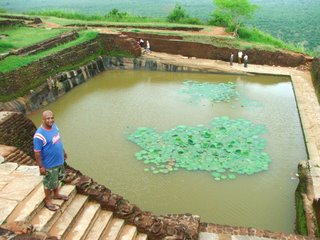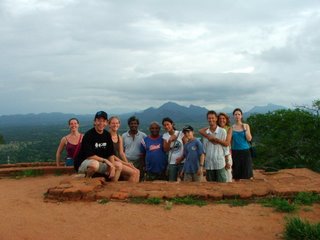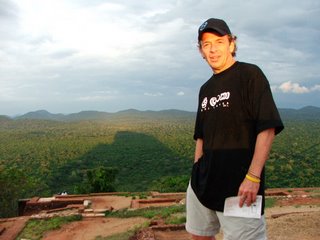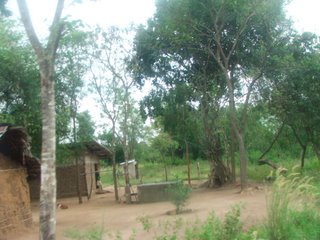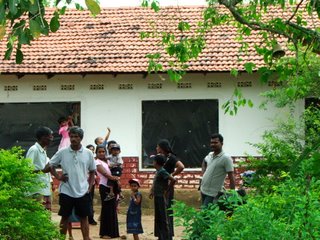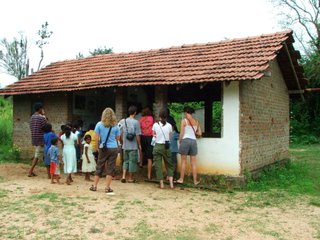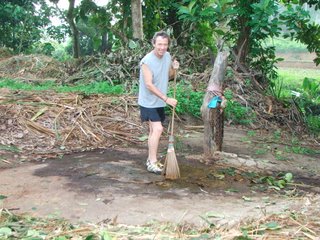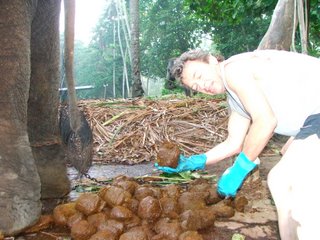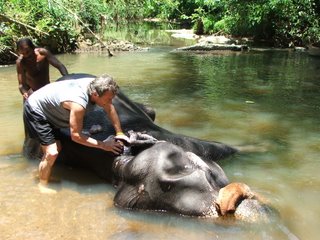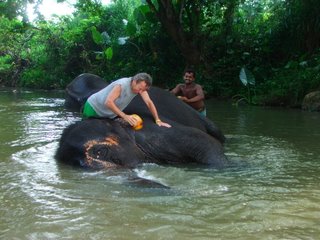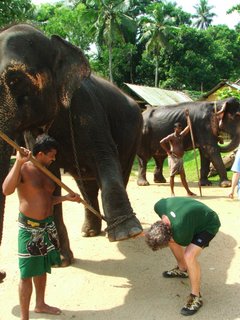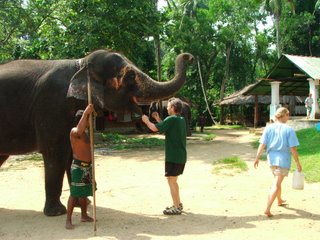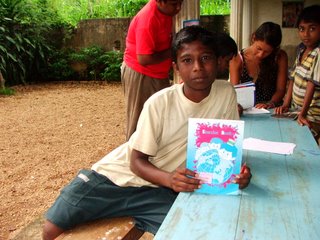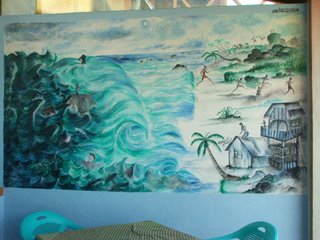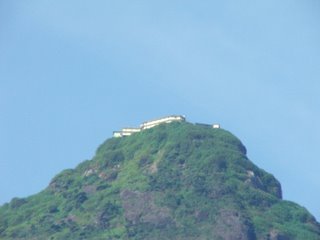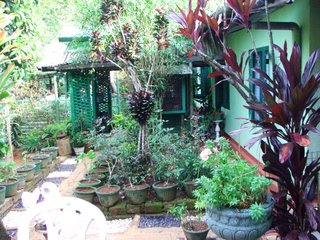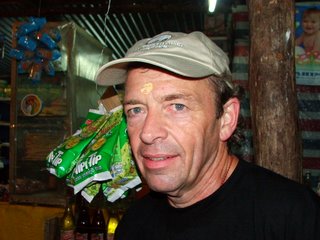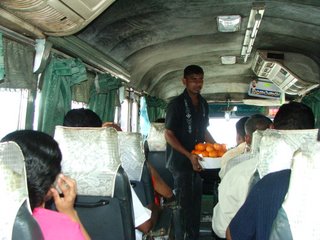


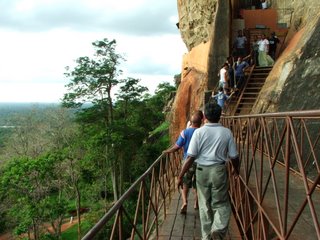
I visited Sigiriya in 2003 on my first trip to Sri Lanka. But, that was pre-Blog, so I'll give you the run-down now.
Sigiriya is among the coolest places to see in Sri Lanka. It's basically this humongous rock, 200 meters high. There's a long story around it, but in AD 473 this guy, Kasyapa, the son of King Dhatusena, killed the old man. This caused his brother, Moggallana, to flee to India, fearing for his life.
Kasyapa figured Moggie would eventually come back to get his. So he built an "impregnable" fortress atop the rock. And it was a piece of work. I've climbed this thing twice now with the aid of semi-, quasi-, sorta- modern stairs. Hope you aren't prone to vertigo. But, you can see the carved steps still on the cliff faces. They must have had ropes or something, because there is NO WAY a person could shinny up those things without help. Up top there was a water system, storage buildings and even a palace. Talk about tactical high ground. Would have taken a month of Sundays to take it. In 491 ol' Moggie came back. He brought an army with him for backup. Just in case.
BUT, being no military genius, Kasyapa figured he might as well go on the offensive. So he rode atop an elephant out to meet Moggie at the head of HIS boys. Long story short, he took a wrong turn, got lost, his troops bailed on him and Kasyapa ended up taking his own life.
But, there's more to Sigiriya. To wit: The Fresco Damsels. They are painted on this long, sheltered gallery half way up the cliff face. In this niche there is a series of rock paintings of beautiful, topless women. They were done in the fifth century, the only non-religious paintings found in Sri Lanka. There may once have been around 500 of these paintings. But, only 22 survive today. A religious wack-job damaged several in 1967. Security is supposedly tight and some paintings are off limits. But, a few rupees got me full access.
It used to be the law (until the Brits showed up in the early 1800s) that all women had to go topless. I think that was a good rule. It''s so hot there you know.
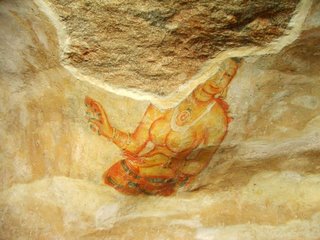

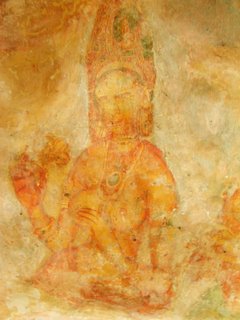
At the Northern end of the rock there is a large platform on which sits the Lions Paws. Back in the day a giant brick lion sat there. People climbing the rock actually entered the mouth of the beast to a stairway to the top. It must have been cool. All that's left now are the paws and the stairway.
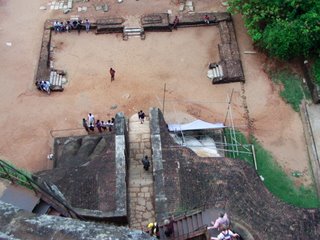
The Paws from Above.

Only the foundations of the buildings that once sat on top remain. The views are incredible. Every image you ever had of the Garden of Eden, every picture, every drawing, from atop Sigiriya you see what it would have looked like if it had actually existed. You can see buildings and some roads, but otherwise it looks probably much like what Kasyapa saw 1500 years ago. Right before he lost his nerve, his mind,his fortress, his way, his life.

